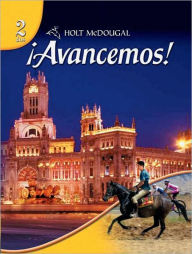
All Solutions
Page 9: Para y piensa
On the other hand, remember that although **ser** and **estar** both mean “to be”, they have some different uses:
– The verb **ser** is used to describe professions, origin, personal traits, physical characteristics, express identity, and give the time and date.
– The verb **estar** is used to indicate locations and to describe how someone feels.
– Tengo 16 años. *( I am 16 years old)*
On the other hand, remember that although **ser** and **estar** both mean “to be”, they have some different uses:
– The verb **ser** is used to describe professions, origin, personal traits, physical characteristics, express identity, and give the time and date.
– The verb **estar** is used to indicate locations and to describe how someone feels.
– Mi amigo es cómico. *( My friend is funny)*
On the other hand, remember that although **ser** and **estar** both mean “to be”, they have some different uses:
– The verb **ser** is used to describe professions, origin, personal traits, physical characteristics, express identity, and give the time and date.
– The verb **estar** is used to indicate locations and to describe how someone feels.
– La maestra es peliroja. *( The teacher has red hair)*
Haven't found what you were looking for?
Search for samples, answers to your questions and flashcards

